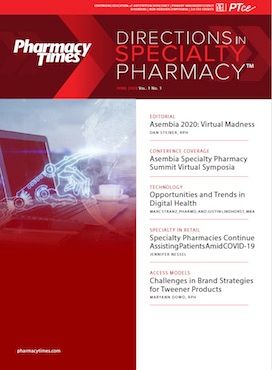
Publication
Article
Specialty Pharmacy Times
Timely Antiviral Administration for Influenza Is Critical to Reduce Its Clinical and Economic Burden
Pharmacists must be able to identify populations that are at high risk for influenza complications.
A VIRTUAL SYMPOSIUM HELD in conjunction with the Asembia Specialty Pharmacy Summit focused on the clinical and economic impact of influenza and available treatment strategies. James Lewis, PharmD, FIDSA, presented a clinical overview of this devastating viral infection and went on to discuss the many complications, such as pneumonia, indicating that serious complications can be life-threatening. Pharmacists must be able to identify populations that are at high risk for influenza complications, which include individuals of younger age and older age, as well as those who have chronic diseases, are immunocompromised, or pregnant; residents of long-term care facilities; those who are obese; among other factors.
For the 2019-2020 season, preliminary estimates for influenza deaths in the United States are between 24,000 and 62,000. Despite the varying severity of influenza seasons, the majority of deaths in recent years have occurred in individuals 65 years or older.
In addition to vaccination, health care professionals should recommend treatment and prophylaxis to eligible individuals who contract or are exposed to influenza. The availability of rapid influenza diagnostic tests has helped streamline diagnosis, but Lewis indicated that false negatives are common and do not rule out influenza. He stressed that antiviral therapy is recommended as early as feasible for patients with either confirmed or suspected influenza who are in a high-risk group or very sick. CDC recommendations for the 2019-2020 influenza season include the neuraminidase inhibitors oseltamivir, zanamivir, and peramivir, as well as a polymerase acidic endonuclease inhibitor, baloxavir. Study results have shown that these medications shorten the duration of symptoms of influenza and, in some cases, prevent serious complications such as pneumonia.
Lewis reviewed the phase 3 BLOCKSTONE study (NCT03684044), which evaluated the use of baloxavir preventively in individuals exposed to household members who had influenza. Results of the trial indicated that baloxavir provided a significant prophylactic effect after a single dose in a 10-day observation. The medication was also well tolerated. In addition, he indicated that the MINIS-TONE-2 study (NCT03629184) met its primary end point. In this trial, investigators observed otherwise healthy children aged 1 to 12 years with confirmed influenza infection. They found favorable tolerability profiles, and baloxavir was comparable to oseltamivir with regard to symptom duration. The FDA has accepted a new drug application (NDA) as well as supplemental NDAs for a new formulation as an oral suspension, an indication for children aged 1 to younger than 12 years, and for postexposure prophylaxis in individuals aged 1 year and older.
Jeffrey D. Dunn, PharmD, MBA, completed the session by discussing the economic burden associated with influenza and the role of managed care professionals. Considering that estimates indicate more than 26 million influenza-attributable events annually, the need to take action is critical. Reducing the estimated annual average of $3.2 billion in direct costs incurred in addition to other costs from productivity losses is a priority.
Dunn indicated that the best approach has multiple prongs: rapid diagnostic testing, education about vaccination, early access to and education about antiviral therapy, and engagement to ensure patient adherence while minimizing adverse effects. He went on to say that, at most, only 43% of eligible high-risk patients received antivirals during the 2011-2016 influenza seasons.
Key points for pharmacists include emphasizing early treatment, examining prior authorization or other utilization management tools to ensure that they are not actually barriers, and imposing quantity limits to ensure that patients do not share or stock-pile. In addition, pharmacists need to be involved in ongoing cost-effectiveness assessment to help reduce the overall burden of influenza.

Newsletter
Stay informed on drug updates, treatment guidelines, and pharmacy practice trends—subscribe to Pharmacy Times for weekly clinical insights.
2 Commerce Drive
Cranbury, NJ 08512
All rights reserved.





